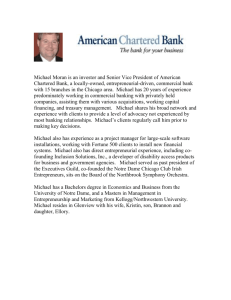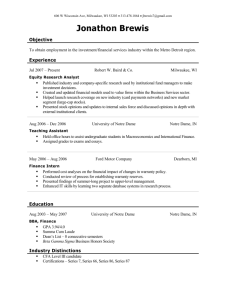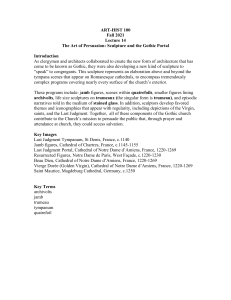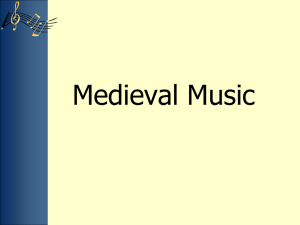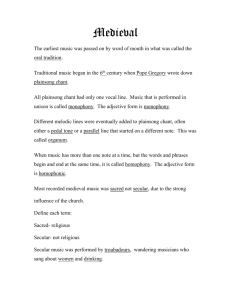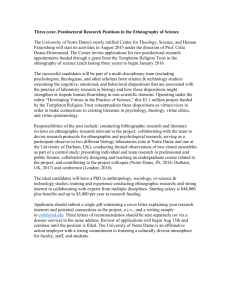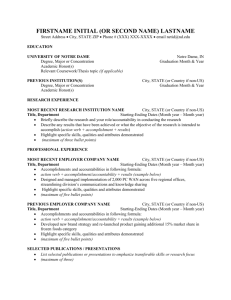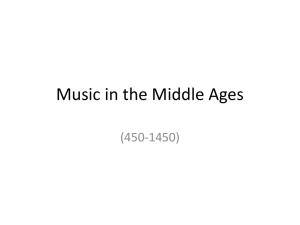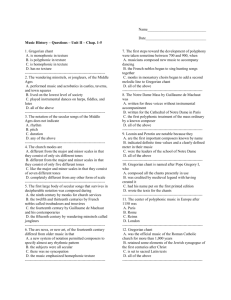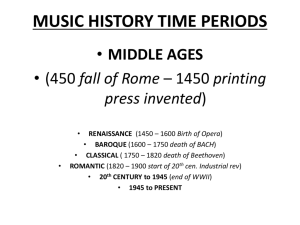Music of the Middle Ages
advertisement
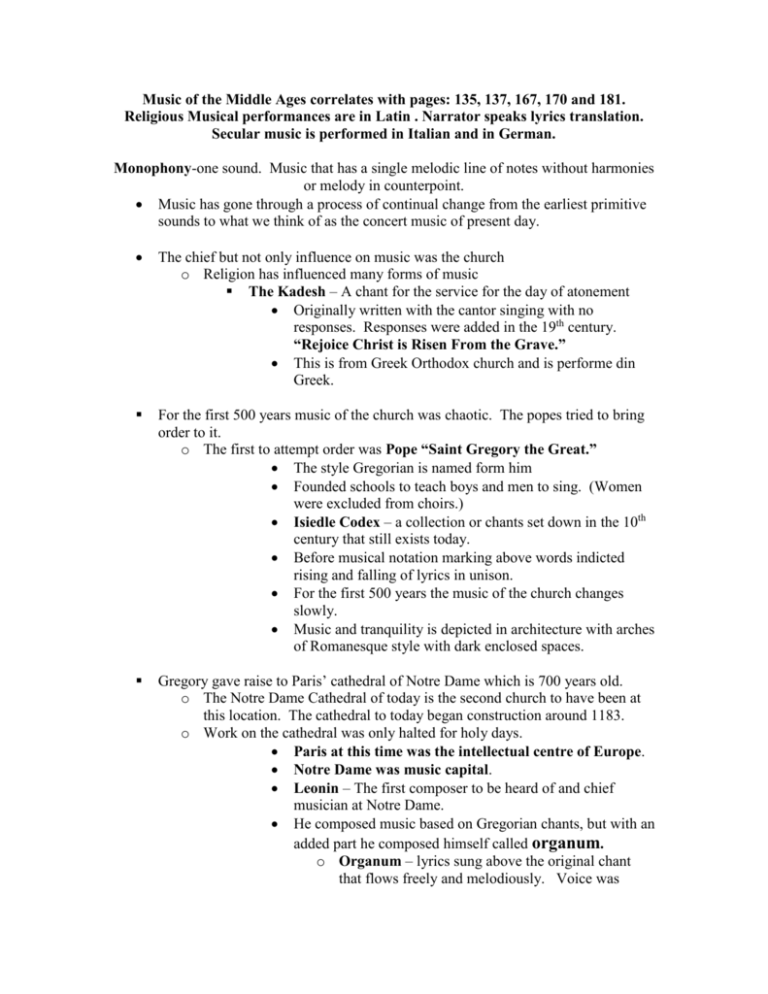
Music of the Middle Ages correlates with pages: 135, 137, 167, 170 and 181. Religious Musical performances are in Latin . Narrator speaks lyrics translation. Secular music is performed in Italian and in German. Monophony-one sound. Music that has a single melodic line of notes without harmonies or melody in counterpoint. Music has gone through a process of continual change from the earliest primitive sounds to what we think of as the concert music of present day. The chief but not only influence on music was the church o Religion has influenced many forms of music The Kadesh – A chant for the service for the day of atonement Originally written with the cantor singing with no responses. Responses were added in the 19th century. “Rejoice Christ is Risen From the Grave.” This is from Greek Orthodox church and is performe din Greek. For the first 500 years music of the church was chaotic. The popes tried to bring order to it. o The first to attempt order was Pope “Saint Gregory the Great.” The style Gregorian is named form him Founded schools to teach boys and men to sing. (Women were excluded from choirs.) Isiedle Codex – a collection or chants set down in the 10th century that still exists today. Before musical notation marking above words indicted rising and falling of lyrics in unison. For the first 500 years the music of the church changes slowly. Music and tranquility is depicted in architecture with arches of Romanesque style with dark enclosed spaces. Gregory gave raise to Paris’ cathedral of Notre Dame which is 700 years old. o The Notre Dame Cathedral of today is the second church to have been at this location. The cathedral to today began construction around 1183. o Work on the cathedral was only halted for holy days. Paris at this time was the intellectual centre of Europe. Notre Dame was music capital. Leonin – The first composer to be heard of and chief musician at Notre Dame. He composed music based on Gregorian chants, but with an added part he composed himself called organum. o Organum – lyrics sung above the original chant that flows freely and melodiously. Voice was usually a tenor and the singer mimicked the sound of a flute. Leonin had a book of organum which consisted of songs. The piece performed in video is “Garde Maria Vergo” (Rejoice Oh Virgin Mary). Perotin was Lenonin’s successor at Notre Dame Gothic architecture was first developed at same time as polyphonic form of music. Polyphony – many sounds. Music in which several simultaneous voices or instrument parts are combined contrapuntally. These voices are sung in rounds above the base chant. The effect of the voices is layered. Perotin is believed to have composed the music for the holy days during the construction of the cathedral of Notre Dame. o “Vedrunt Onnes” (All Shall See) – believed written for the Christmas season at Notre Dame in 1198. o Now there were beginnings of musical notation. Polyphonic music and Gothic architecture have common rhythm and order. o The space of the Gothic cathedral is more complex and more symmetrical than Romanesque and in the same manner the different lines of music are more structured than melodic line of chart. Not all music was divinely inspired. “Carmina Burana” manuscripts. o Bavarian Benedictine monks celebrated wine and women in sound the 13th century. Outside the churches ad monasteries the nearest thing to professional musicians were the Troubadours and the Minstrels. o They wrote ballad like songs on the universal theme of love and war. o In Germany they were know as minnesingers. Minnesinger-Singers of love. German equivalent of troubadours, flourishing in the 12th and 13th century guilds. o Best known minnesinger was Walther von der Vogelweide. He wrote “Palestine Song”. o Technique of playing lute and guitar developed from Arab Spain. In the 14th century Ars nova (new art) was sweeping Europe. o Called for after a treatise of the same name made by Philippe de Vitry. Laid down standard of musical practice, rhythms. Remembered as leading intellectual of the day more than a composer. o Guillaume de Machaut-compatriot to de Vitry. He managed to inject some humanity and lyricism into Ars nova style. “II M’est Avis Quat Je Suis Mi” - one of Machaut’s ballads. “II Matavie” (They Told Me So) - another of Machaut’s ballads. o The instruments of the day were the harp, the recorder, the bells, the lute, and the viol. Songs were often performed on instruments alone. o Machaut – best know for writing the first complete setting of mass to survive. The Notre Dame mass. The base chant is largely gone during this period of time Estampie was lively dance music of the day. It was complex with various twists and turns.
